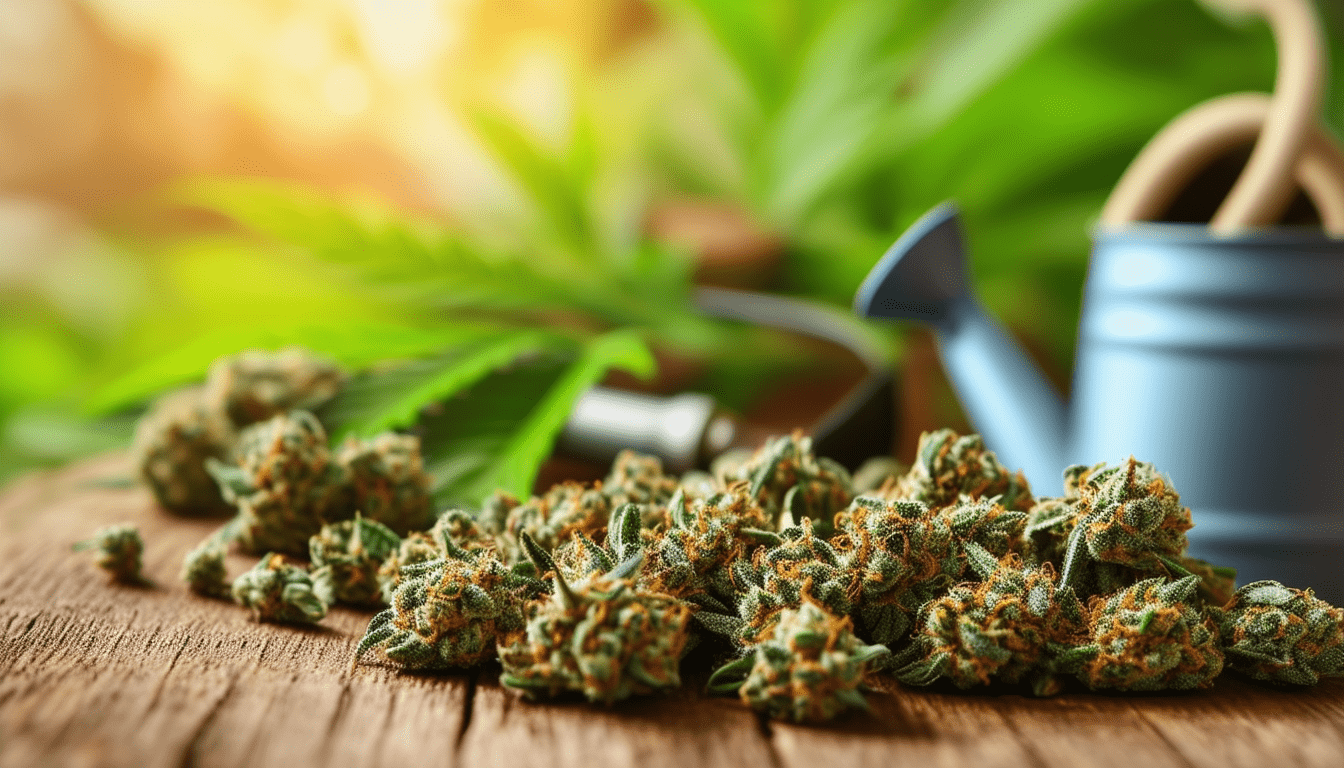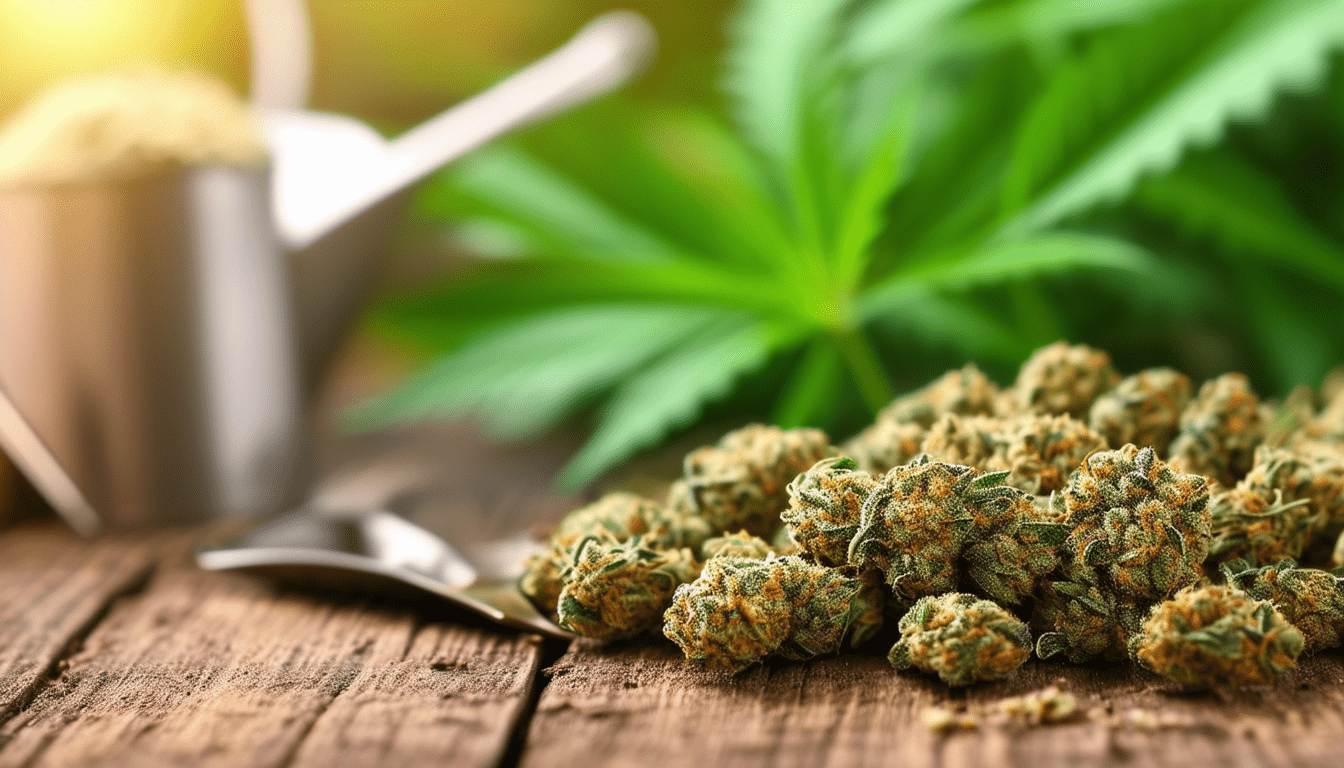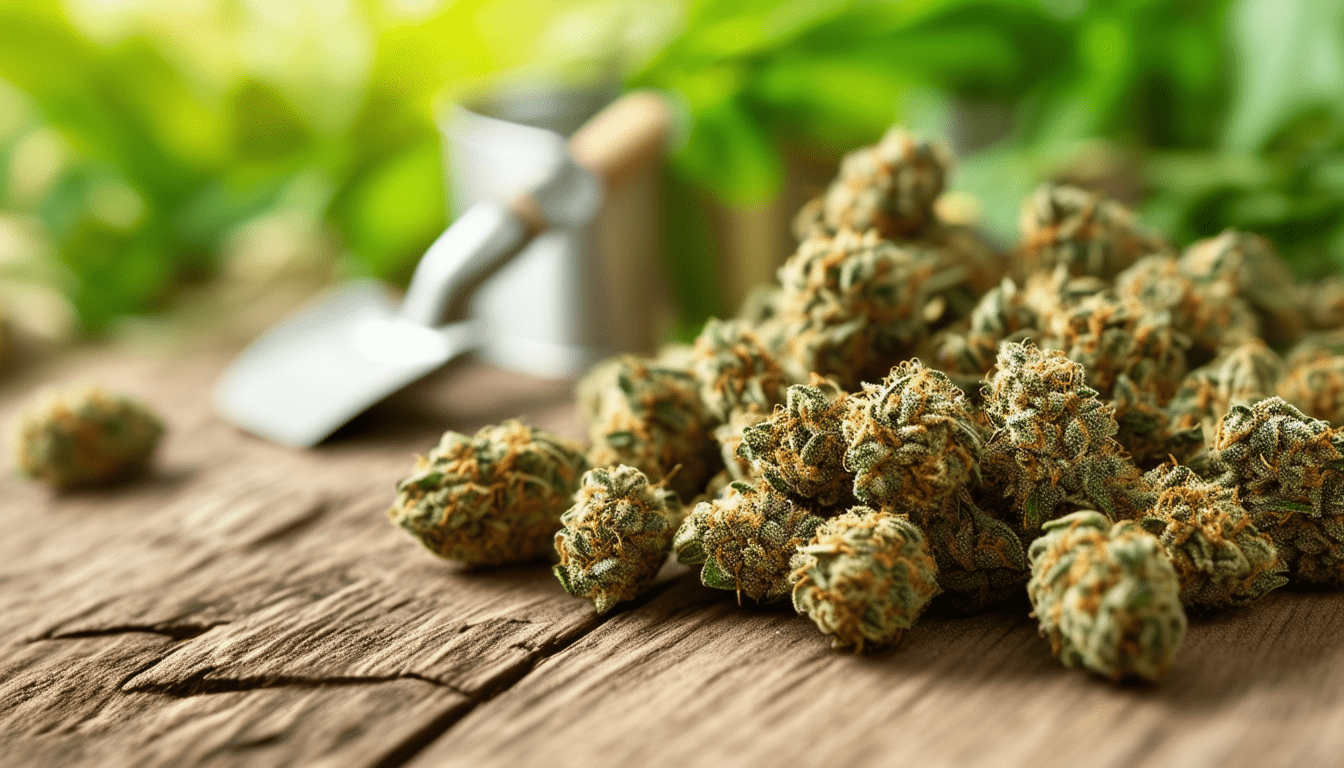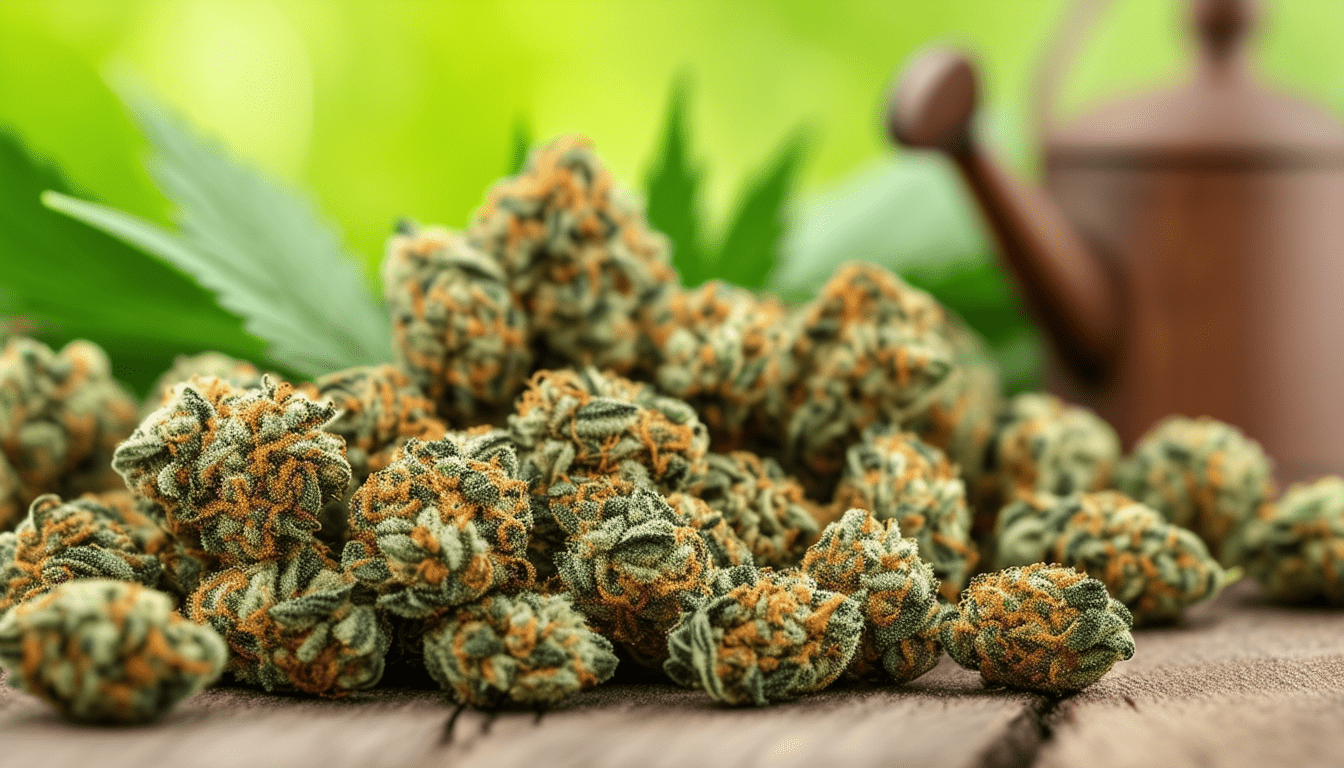Understanding the Basics of Cannabis Seeds
|
IN BRIEF
|
Cannabis cultivation begins with understanding the fundamentals of cannabis seeds, the building blocks of a successful growing endeavor. These seeds contain genetic information inherited from both male and female parent plants, which can significantly influence the characteristics of the resulting plants. Familiarizing oneself with the types of seeds available—regular, feminized, and auto-flowering—is essential for any grower aiming to optimize their crop. Additionally, knowledge on seed anatomy, germination processes, and the ideal conditions for growth can greatly enhance the cultivation experience, leading to a healthier and more abundant yield. Understanding these basics lays the groundwork for a fruitful cannabis-growing journey.

Cannabis seeds are the foundation of marijuana cultivation, acting as the primary source for growing new plants. Grasping the fundamentals of cannabis seeds, including their types, anatomy, and germination process, is essential for both novice and experienced growers. This article explores the different types of cannabis seeds, how they work, and the best practices for successful germination and cultivation.
The Anatomy of Cannabis Seeds
A cannabis seed is a small, oval-shaped dried fruit, typically measuring around 3-4mm long and 1.5-2mm wide. Each seed is encased in a subtle membrane that protects the developing embryo inside. The outer shell, or seed coat, varies in color, size, and texture, which can indicate the overall health and potential of the seed. Healthy cannabis seeds often exhibit a brown color with subtle stripes or mottling, which suggests that they contain sufficient nutrients for germination [source].
Types of Cannabis Seeds
There are three primary types of cannabis seeds available to growers: regular, feminized, and auto-flowering. Each type serves a different purpose and caters to various growing preferences.
Regular Seeds
Regular seeds are produced through the natural mating of male and female cannabis plants. These seeds can produce both male and female plants, making them a popular choice among traditional growers and breeders. Regular seeds offer a diverse genetic pool and are often used for breeding new strains [source].
Feminized Seeds
Feminized seeds are specifically bred to ensure that all plants produced will be female, which is crucial for growers focusing on flower production. Since only female cannabis plants produce the buds that enthusiasts enjoy, feminized seeds significantly increase the chances of developing a successful crop. They are highly favored for indoor gardening where space and resources are limited.
Auto-Flowering Seeds
Auto-flowering seeds possess the unique ability to flower automatically after a certain period, regardless of light conditions. This strain is particularly advantageous for growers seeking quick harvest times and those who live in regions with shorter growing seasons. Auto-flowering seeds, typically a mix of sativa and indica genetics, can thrive in various environments.
Germinating Cannabis Seeds
The germination phase is critical in the cultivation of cannabis plants. It involves encouraging seeds to sprout and develop into seedlings. Proper temperature, humidity, and care during this stage directly influence the success of the plants. Ideal germination conditions typically include a warm and humid environment, with temperatures ranging from 70-90°F (21-32°C).
How to Choose Quality Cannabis Seeds
Not all cannabis seeds are created equal. When selecting seeds for cultivation, it is crucial to consider their appearance and genetic background. Quality seeds are firm, have a noticeable color, and lack any signs of damage or mold. Growers should seek seeds from reputable sources and consider their specific cultivation goals when choosing the right strains [source].
Understanding Cannabis Genetics
Cannabis plants possess complex genetic backgrounds that can be categorized into two main species: Sativa and Indica, along with the lesser-known Ruderalis. Sativa strains are known for their uplifting effects and longer flowering periods, while Indica strains offer relaxing effects and shorter flowering times.
Understanding genetics plays a significant role in selecting the right seeds for desired outcomes. Growers can also explore F1 and F2 strains, where F1 refers to the first generation of hybrid seeds, exhibiting hybrid vigor, while F2 represents the second generation, showcasing greater genetic variation [source].
The Benefits of Understanding Cannabis Seeds
By familiarizing oneself with the fundamentals of cannabis seeds, cultivators can improve their chances of growing thriving plants that yield quality buds. A solid understanding of seed types, germination techniques, and cannabis genetics enables growers to make informed decisions that align with their specific goals and growing conditions. These insights not only help in maximizing yield but also enhance the overall experience of cannabis cultivation. Furthermore, knowledge about the benefits of hemp extract can supplement a grower’s understanding of the potential uses and benefits of the plant beyond mere cultivation.
Comparison of Cannabis Seed Types
| Type of Cannabis Seed | Description |
| Regular Seeds | Produced from the natural pollination of male and female plants, may yield both male and female plants. |
| Feminized Seeds | Genetically modified to ensure only female plants, increasing the likelihood of producing buds. |
| Auto-flower Seeds | Flower based on age rather than light cycle, ideal for quick and simple cultivation. |
| Seed Anatomy | Each seed contains an outer shell, the germ, and cotyledons for photosynthesis upon sprouting. |
| Germination Time | Typically takes between 24 to 120 hours under the right conditions to sprout. |
| Optimal Germination Temperature | Temperatures should ideally be between 70°F to 90°F for best results. |
| Identification of Quality Seeds | Look for seeds that are darker in color, firm, and have a smooth surface without cracks. |

Cannabis seeds are the foundation of cultivation, serving as a vital link between genetics and growth. Understanding the types of seeds available, their characteristics, and the germination process is essential for both novice and experienced growers. This guide will provide insight into the anatomy, categories, and tips for successful germination.
The Anatomy of Cannabis Seeds
Cannabis seeds, though small in size, are complex structures. They are generally oval-shaped, measuring about 3-4mm in length and 1.5-2mm in width. Covered with a delicate membrane, these seeds house the embryo which will develop into a new plant. The quality of the seed—such as color, texture, and weight—can indicate its viability and potential for germination. Generally, healthy seeds exhibit a dark color with a robust exterior, while pale or cracked seeds should be avoided.
Types of Cannabis Seeds
There are three main types of cannabis seeds that growers encounter: regular, feminized, and auto-flowering seeds. Regular seeds are produced through natural mating between male and female plants. They have the potential to produce both male and female plants, making them popular among breeders looking to create new strains.
Feminized seeds, on the other hand, are engineered to eliminate male traits, typically resulting in a crop composed primarily of female plants. This is particularly advantageous, as only female plants produce the buds that are highly sought-after among cannabis enthusiasts.
Meanwhile, auto-flowering seeds are unique in their ability to switch from the vegetative state to the flowering stage regardless of light cycles, making them ideal for growers in environments where lighting conditions may be inconsistent.
The Germination Process
Successfully bringing cannabis seeds to life starts with proper germination. The environment is key: seeds require warm temperatures and adequate humidity to sprout effectively. The optimal germination temperature ranges from 70°F to 85°F. A common method includes placing seeds between damp paper towels in a warm location, ensuring they remain moist but not soaked. Ensuring the right conditions increases the chances of swift germination and healthy plant development.
The germination process typically takes between 24-72 hours, but patience is essential. Once the seeds have sprouted and the taproot is visible, they can be gently transferred to their growing medium.
Choosing the Right Seeds for Your Grow
When selecting cannabis seeds, it is vital to consider the growth environment and desired outcomes. Factors such as strain type, expected yield, and flowering time should guide your decision. Resources like seed catalogs can provide valuable information on specific strains and their characteristics.
By understanding the various aspects of cannabis seeds—from their anatomy and types to effective germination techniques—growers are better equipped to cultivate vibrant and fruitful plants. For more detailed information, visit comprehensive resources like Weed Seeds 101 and learn more about cannabis cultivation techniques at Cannabis Daily News.
- Types of Seeds: Regular, feminized, and auto-flower
- Genetic Source: Seeds carry genetic information from two parent plants
- Seed Anatomy: Small, oval-shaped dried fruit
- Germination Temperature: Crucial for seed viability
- Gender Identification: Only female plants produce buds
- Germination Duration: Typically a few days to weeks
- Growing Techniques: Varies based on seed type and environment
- Seed Selection: Important for desired characteristics in the crop
- Pesting & Safety: Factors impacting seed health and growth
- Storage Practices: Proper conditions extend seed longevity

Cannabis seeds form the foundation of any cannabis cultivation project. Grown from seeds or clones, they encapsulate the genetic heritage of their parent plants, allowing for a diversity of characteristics and traits in the resulting plants. This article will delve into the essential aspects of cannabis seeds, including their types, anatomy, and germination process, enabling growers to make informed choices for a successful harvest.
Types of Cannabis Seeds
When embarking on a cannabis growing journey, it is crucial to understand that there are three main types of cannabis seeds available: regular, feminized, and auto-flowering.
Regular Seeds
Regular cannabis seeds are produced through the natural mating of male and female plants. These seeds can produce both male and female plants, which is essential for those wishing to breed their own strains. However, for those primarily interested in cannabis flower production, the risk of obtaining male plants—which do not produce buds—makes regular seeds a less popular choice.
Feminized Seeds
Feminized seeds are designed to eliminate the possibility of male plants, ensuring that growers cultivate exclusively female plants. These seeds are produced when a female plant is induced to produce pollen, allowing for self-pollination. Feminized seeds are favored by many growers for their reliability in yielding the sought-after cannabis buds.
Auto-Flowering Seeds
Auto-flowering seeds are a unique innovation in cannabis cultivation. They transition from the vegetative stage to the flowering stage automatically, regardless of light cycles. This trait makes them an excellent choice for novice growers or those with limited space, as auto-flowering plants tend to have a quicker growth cycle and are smaller in stature, requiring less maintenance.
Understanding Cannabis Seed Anatomy
Cannabis seeds are small, oval-shaped fruits that carry essential genetic information. Typically measuring around 3-4mm in length, these seeds are surrounded by a subtle exterior membrane. The careful analysis of seed appearance can provide insights into their quality. Healthy seeds are usually firm and have a darker coloration, while pale or fissured seeds may be less viable.
Germination: The Key to Successful Growth
The process of germinating cannabis seeds is a crucial step that demands attention to detail. Understanding what to look for in healthy seeds is the first step in this process. Factors such as temperature, humidity, and the technique employed can significantly affect germination success. Ideal germination conditions typically require temperatures between 70°F and 90°F and a humidity level of around 70-90%.
The standard approach to germination involves soaking the seeds in water for 12-24 hours, followed by transferring them to a moist medium where they can develop their taproot. Patience is vital, as germination can take anywhere from 24 to 72 hours. Proper monitoring during this stage will set the foundation for healthy plant growth.
Choosing the Right Seeds for Your Grow
Selecting the appropriate cannabis seeds is a fundamental aspect of successful cultivation. Consider the desired traits you want in your plants, such as growth rate, yield, and cannabinoid profile. Researching and understanding the genetic lineage of various strains can aid in making informed decisions that align with your cultivation goals.
In summary, understanding the basics of cannabis seeds—including their types, anatomy, and germination process—is crucial for any aspiring grower. By selecting the right seeds and providing optimal conditions, growers can ensure a healthy and productive cannabis crop.


Post Comment